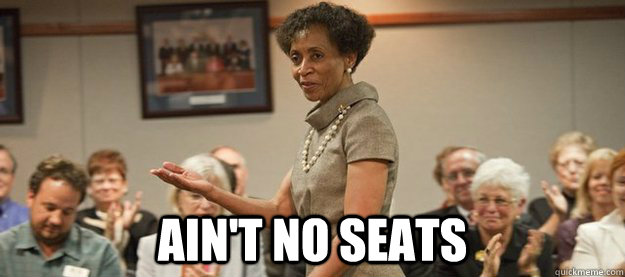For some time now, those who carefully monitor such things have reported that something like 90% of the Amtrak Downeaster trains leaving from and arriving in Brunswick are less than 15% full.
This does not sit well with those who define the success of the service strictly in terms of ‘ridership,’ which they report in a variety of convoluted ways so as to discourage parsing and analysis. We recently reflected on the subject here: http://othersideofbrunswick.blogspot.com/2014/09/downeaster-ridership-quick-question-or.html
We made these comments:
So we have a question or two to pose.
First, if we purchase a round trip ticket between Brunswick and Portland, but don’t use it, do we he have an effect on ridership totals?
Second, if we do use it, how do we affect ridership totals? Do we represent an increase of two in total ridership: one for the trip from Brunswick to Portland, and one for the trip back to Brunswick? Or do we represent an increase of four: one departing Brunswick, one arriving Portland, one departing Portland, and one arriving Brunswick?
We hope, of course, that we don’t represent an increase of six total, the four just mentioned, plus a rider at the Freeport station in each direction.
We have no doubt that the system and NNEPRA are highly motivated to maximize the ridership totals, and their ‘growth.’ But until the same rigor and discipline is applied to ridership figures certified accounting methods required of financial reporting, we simply can’t be sure.
Especially since there is virtually no public disclosure of PRECISELY how ridership information is collected and reported.

The issue of nearly empty trains in Brunswick does not provide good ‘optics’ for backing-up the much trumpeted success of the Downeaster. So in response, we get the rationalization of NNEPRA’s ED, Patricia Quinn, which in itself is an admission that reports of slim ridership into and out of Brunswick are accurate.
For example, we find this in a recent Portland Press Herald article:
“The popularity of the train in the southern end of the route makes it hard to fill the train in Brunswick,” according to NNEPRA’s Executive Director. “That’s because many trains sell out farther down the line. So a prospective customer who wants to board in Brunswick and travel to Boston may not be able to reserve a seat because all the available seats for that train are reserved by passengers who will board farther down the line.”

There’s a reason why we call ourselves “The Other Side.” You know us; we’re a skeptic and a cynic with an insatiable thirst for knowledge. So we decided to do what we often do; look into things on our own, as any good correspondent could, should, and would.
In this case, we decided to look into the availability of seats on future trains from Brunswick to Boston; and the same from Boston to Brunswick. We went to the Amtrak ticket portal via the NNEPRA web site, to check the availability of 8 adult seats in each direction.
For purposes of this exercise, we set our search parameters for the dates of Sunday, October 19th, and every day after that until the end of the month – Friday, October 31st. Here’s what we found.
Southbound Trains - Brunswick to Boston:
This data was compiled at roughly noon today. Both the early and late departures from Brunswick to Boston had the requested 8 seats available, and at a variety of fare levels. The ‘mid-morning’ hybrid run, which begins with a bus to Portland, and continues with a train, had the 8 requested seats available on weekend days, and was a cancelled connection on weekdays, in all likelihood because of track repair operations.
The through trains (early and late) are 3 1/2 hour trips. The hybrid bus/train run, when it operates, is closer to 5 hours.

So on the basis of that information, we’re raising the Brunswick Sausage flag on claims that the trains leave Brunswick sparsely patronized because ‘seats are sold out further down the line.’
Northbound Trains - Boston to Brunswick:
Later today, in the 5 pm hour, we checked on the availability of 8 adult seats, again for each day from tomorrow, the 19th, through the end of the month. The early departure from Boston has the requested 8 seats available at a variety of fares on weekends, but is cancelled on weekdays, again, presumably because of track repair work. The late departure has the 8 requested seats available each and every day, at multiple fare levels.
Here again, there are ‘hybrid runs,’ leaving at the same time as the early run, and varying as to connections. On weekends, the requested 8 seats are available at multiple fare levels, while on weekdays, one of the connections, which is redundant to the through train departure, has 8 seats available at multiple fares. while the other connecting option, at 5 hours total, is cancelled.
So it appears, at least based on our limited case study, that the notion of no seats available due to sold out trains downstream is, to put it charitably, a fantasy. Propaganda, marketing hype, excuse making, what have you.
Some might think of the claims from the Downeaster and TrainRiders Northeast as lies, but we won’t go so far as to say that. Instead, we’ll think of it as another example of how government agencies, and their lobbyists, do their level best to make sure you ‘don’t worry, be happy.’

Add some razzle dazzle production values, distracting moves, flashy duds, and carefully arranged pompadours, and before you know it, you’ll have the groupies and fans screaming for more and calling for the smelling salts to overcome the vapors.
If that’s not enough to explain things, you can always go with more traditional explanations.

And now they want to add New York City to the equation? Will we never get to rest?
No comments:
Post a Comment